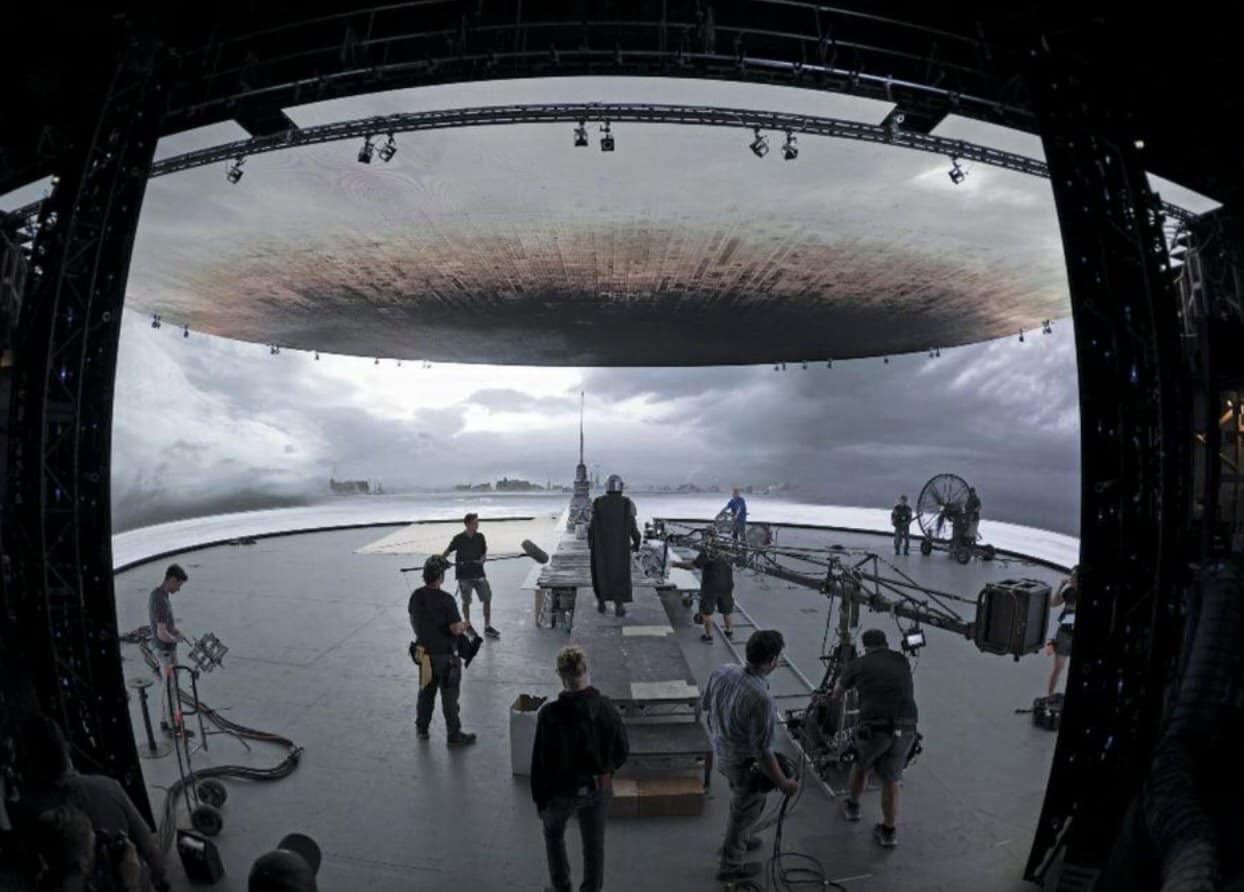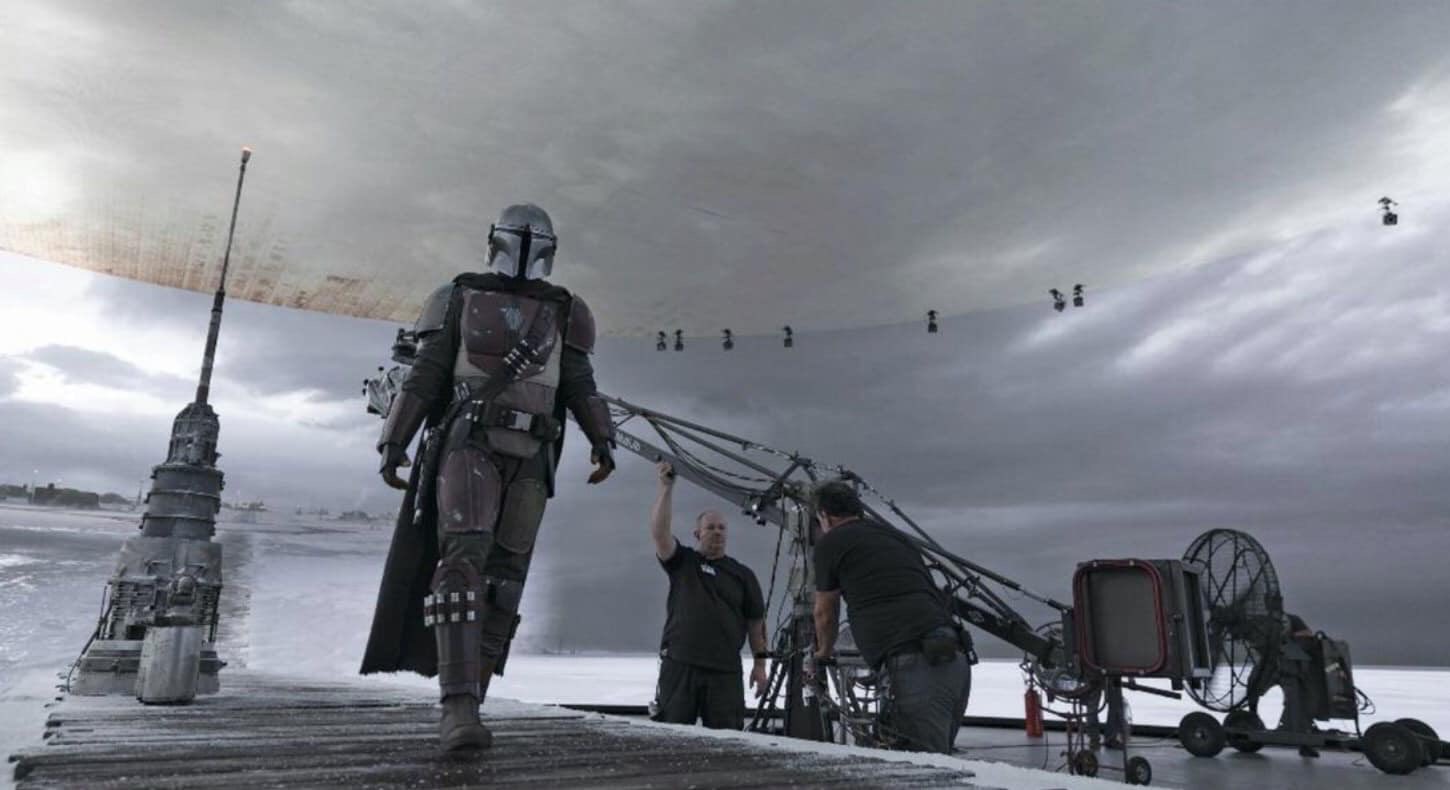The Parallax View.
Friday, January 24th, 2020
I spent a while this afternoon listening to this podcast (caution, very geeky and behind-the-scenes) that discussed new techniques for shooting that involve environments that are projected on really big, really high res, all-but-cycloramic LED panels that encircle the actors, casting enough light that if the scene on the screen is “outdoors”, the bounce and fill and reflections and all of that stuff are just as they should be. Sunlight is sunlight, casting shadows! An overcast day is diffuse and low-key.
But the thing with flat cycs is that when you move the camera closer, higher, lower, or any which way in relation to the backdrop, it doesn’t change the way the world really does when you look out the window of your house. Move a foot to the right, and you see parts of what was behind your car, and the house across the street shifts to show you just a tad more of the tree that’s behind it.
So, with the help of massive GPU units reminiscent of the highest-end video games, this system tracks the position of the camera within “the volume” along with all kinds of lens data and changes perspective and parallax correctly on the fly. You get closer to the wall, you “see” more peeking out from around the foreground. That is some very, very sophisticated math to handle in real time.
The production which is the latest to make use (extensive use) of this approach is Disney’s The Mandalorian, and the podcast above is an interview with Baz Idoine, one of the show’s cinematographers—the directors of photography.


Two images from a tweet by the CBC (@THECBCYT)
The cinematographer works with the 3d modelers and “lights” the scene that is then displayed on the LED cyclorama, and that’s a lot of the work done right there. Set-up is (ultimately) faster, the results can be seamless, and when you’re shooting a series about a bounty hunter in a reflective helmet, getting “real” reflections is a big bonus too.
This is an evolution of technology that started with the films Gravity, Rogue One, and First Man, but we’re reaching the point where it’s not novel, it’s (almost?) convenient.
You can read a lot more about this new tech here, and I’m looking forward to the latest? next? issue of American Cinematographer, which apparently examines this in great detail.
[UPDATE: No, the article is in ICG Magazine’s Feb-Mar 2020 issue. ICG is the journal of the International Cinematographer’s Guild. Great article.]
Clearly, I’m fascinated by this. I would love to spend an afternoon on a ladder in a studio watching these folks make this work.

